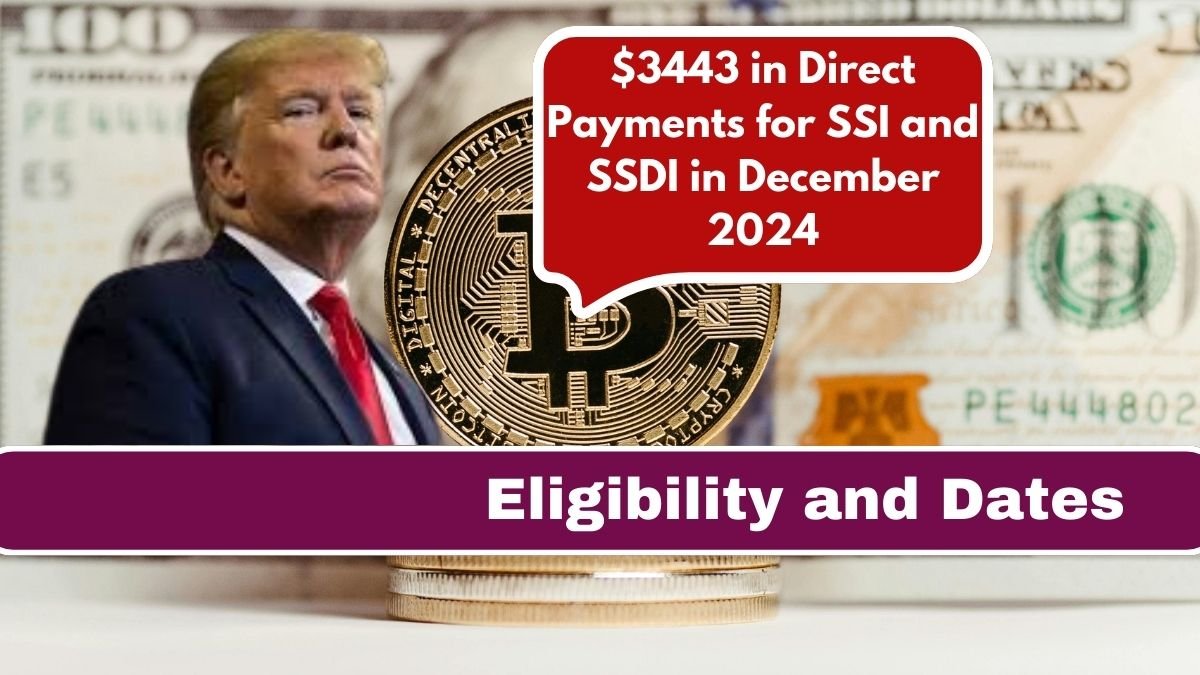If you’re someone who relies on Supplemental Security Income (SSI) or Social Security Disability Insurance (SSDI), December 2024 might just be bringing you a little holiday cheer. Why? Because eligible recipients could receive up to $3,443 in direct payments this month. Sounds like a much-needed financial boost, doesn’t it? Let’s break this down and see if you’re eligible, when to expect these payouts, and how to verify your benefits.
What Are SSI and SSDI?
Before diving into the specifics, let’s quickly touch on what SSI and SSDI are. SSI is a federal program designed to assist people with limited income and resources, such as older adults or those with disabilities. On the other hand, SSDI is meant for individuals who have disabilities and have worked long enough (and recently enough) to qualify by paying Social Security taxes. While both programs aim to support individuals who need financial help, they have different eligibility requirements.
Why $3,443? Understanding the Amount
You’re probably wondering how this figure came about. The maximum monthly SSDI payment for 2024 is set at $3,627. However, not everyone qualifies for this maximum amount. Your payout depends on your earnings history and the taxes you’ve paid into the Social Security system. For SSI recipients, the federal maximum payment in 2024 is $914 for individuals and $1,371 for couples.
So where does $3,443 fit in? This amount could represent combined benefits for some recipients who are eligible for both SSDI and SSI, or those who receive a back payment due to delayed processing.
Key Dates to Watch in December 2024
Timing is everything when it comes to your payments. Here’s a quick breakdown of when you can expect the money:
| Type of Benefit | Payment Date |
|---|---|
| SSI | December 1, 2024 |
| SSDI (Birth Date 1-10) | December 11, 2024 |
| SSDI (Birth Date 11-20) | December 18, 2024 |
| SSDI (Birth Date 21-31) | December 25, 2024 (or earlier) |
Payments typically follow this schedule unless a holiday interferes. Since December 25 falls on Christmas, some payments may be issued earlier than usual.
Are You Eligible? Let’s Find Out
Eligibility can sometimes feel like a tricky maze, but it’s simpler than you might think. To qualify for SSI, you must:
- Be 65 or older, blind, or disabled.
- Have limited income and resources.
- Be a U.S. citizen or qualified non-citizen.
For SSDI, eligibility hinges on:
- Having a medical condition that meets Social Security’s strict definition of disability.
- Accumulating enough work credits through prior employment.
If you’re unsure about your status, don’t stress. The Social Security Administration (SSA) has tools online to check your eligibility, or you can visit a local office.
How to Verify Your Payment
To make sure you’re receiving the correct amount, keep an eye on your benefit statements. You can:
- Log into your My Social Security account online. This platform is super handy for tracking payments and confirming deposit dates.
- Check your bank account for direct deposit transactions. Payments usually appear as “US TREASURY” or something similar.
- Contact your local SSA office if something doesn’t add up. They’re there to help sort out any issues.
What If You Don’t Receive Your Payment?
No need to panic if your payment doesn’t show up on the expected date. Here’s what you can do:
- Wait at least three business days before taking action.
- Check your bank account or payment method.
- Call the SSA’s customer service at 1-800-772-1213 to report the issue.
Conclusion
December 2024 might feel a little lighter on your wallet if you’re eligible for these direct payments. With up to $3,443 on the table, it’s crucial to stay informed and ensure you’re meeting all the requirements. Use the payment schedule to plan ahead, and don’t hesitate to verify your benefits if something feels off. After all, a little extra money can go a long way, especially during the holiday season.
FAQs
Who qualifies for the maximum SSDI payment?
The maximum SSDI payment is reserved for individuals with a high earning history and maximum contributions to Social Security taxes.
Can I receive both SSI and SSDI benefits?
Yes, it’s possible to receive both if you meet the eligibility criteria for both programs. This is called “concurrent benefits.
What happens if my payment date falls on a holiday?
If your payment date falls on a holiday, you will typically receive the payment earlier.
How can I apply for SSI or SSDI benefits?
You can apply online at the SSA’s website, call their hotline, or visit a local SSA office for assistance.
What should I do if I’m denied benefits?
If denied, you have the right to appeal the decision. The SSA provides clear steps for filing an appeal.





